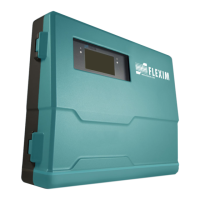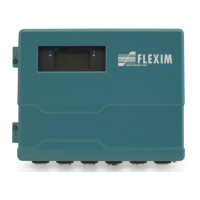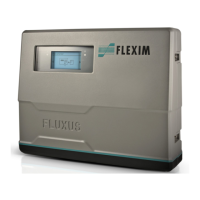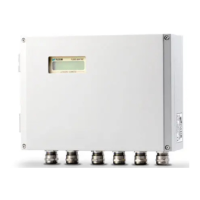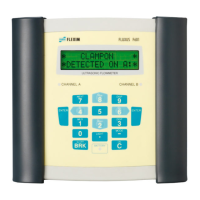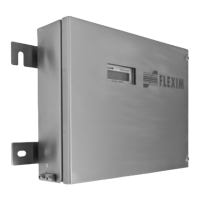10 Measurement of Concentration and Mass Flow Rate PIOX S70x
UMPIOX_S7V4-6-3EN, 2018-10-10 95
10 Measurement of Concentration and Mass Flow Rate
10.1 Introduction
The measuring instrument PIOX S is used to determine the content of a component in a mixture. For the measured mix-
ture, a media data set containing the content of the component as a percentage value is stored in the transmitter. In the
following, the commonly used term "concentration" will be used for this percentage value.
According to DIN 1310, the content of a component in a mixture can be indicated as a concentration or as a fraction. The
concentration is always the proportion of mass, volume or amount of substance of the component relative to the volume of
the mixture. In contrast, the fraction represents the portion of mass, volume or the amount of substance of the component
to the sum of the corresponding physical quantities of all components of the mixture.
The type of the content measurement to be used in the present application is defined in the medium data set of the mea-
suring instrument before the set up and the corresponding unit of measurement (e.g., M%, ° Brix) is determined.
10.1.1 Measurement of Concentration
The concentration of a two-component mixture can be measured. The medium consists of the main component, mostly a
solvent, and of the measured component. The components do not have to be pure. For example, in the case of a dyestuff
dissolved in a solvent mixture, the solvent mixture is the main component and the dyestuff is the measured component.
Examples of media suitable for a concentration measurement are:
• solid component completely dissolved in a liquid (e.g., salt in water)
• solid component partly dissolved in a liquid (e.g., saturated salt solution)
• mixtures of two liquids (e.g., oil and water)
• gases partly dissolved in a liquid (the concentration of the dissolved gas is measured)
• components with changing concentration (due to chemical reaction or physical effect) in a liquid (e.g., aggregation and
change of the emulsion or suspension state). The change of the sound speed can be interpreted as a degree of aggrega-
tion or conversion.
A concentration measurement is possible if:
• a flow measurement with valid measured values is existing
• a valid medium data set has been stored and selected
• a measurement of the medium temperature (Pt100 / Pt 1000 or external temperature measurement) with the transmitter
is possible.
The measured concentration can be stored and transmitted with the other measured values.
Measurement Principle
To calculate the concentration of a medium component, the sound speed of the flowing medium is measured. As inaccu-
racies of the installations have a strong effect on the measured sound speed, it has to be corrected by means of a calibra-
tion:
c
c
= c
m
+ m · T + n
The calibration coefficients are defined directly during the installation by FLEXIM or by the customer (see section 10.8).
For most of the measurement points with low temperature changes it is sufficient to determine the coefficient n.
The concentration is calculated from the corrected sound speed using an algorithm that is stored within the medium data
set.
Due to average of both transit times is used in the measurement of sound speed, the concentration measurement is inde-
pendent of the flow profile.
c
c
– corrected sound speed in m/s
c
m
– measured sound speed in m/s
T – medium temperature in °C
n – calibration coefficient (registers inaccuracies during installation, e.g., transducer distance)
m – calibration coefficient (registers changes of pipe characteristics subject to temperature)
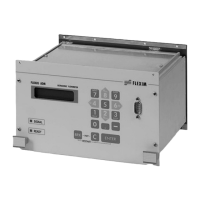
